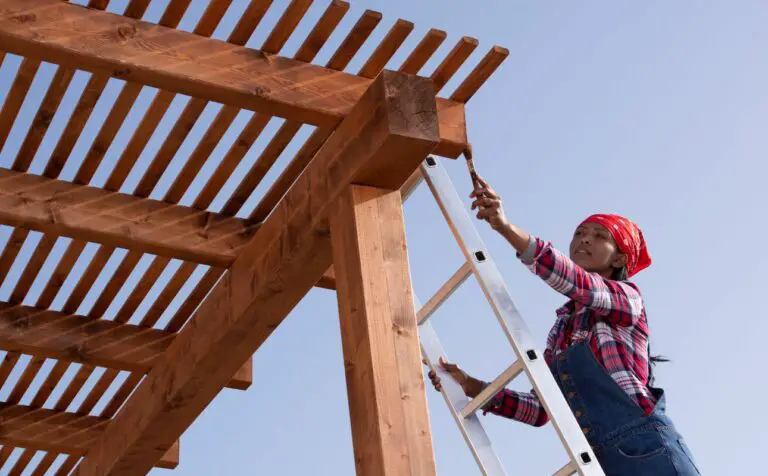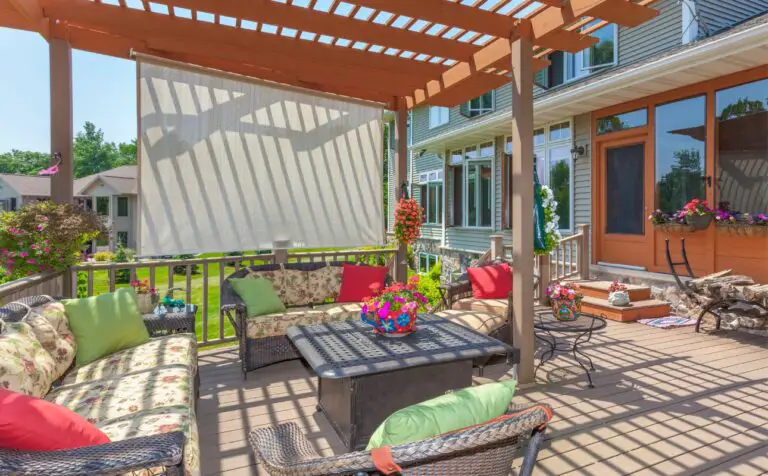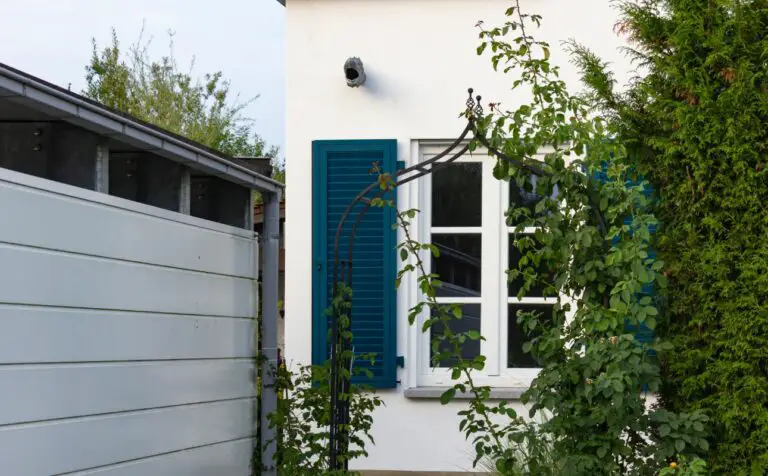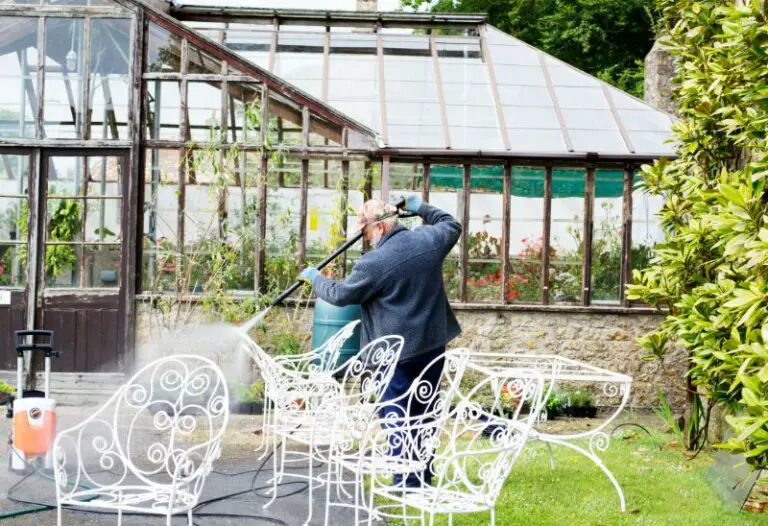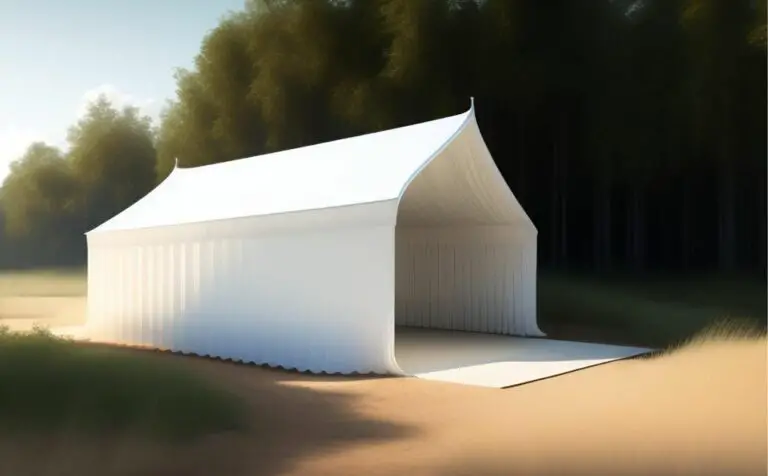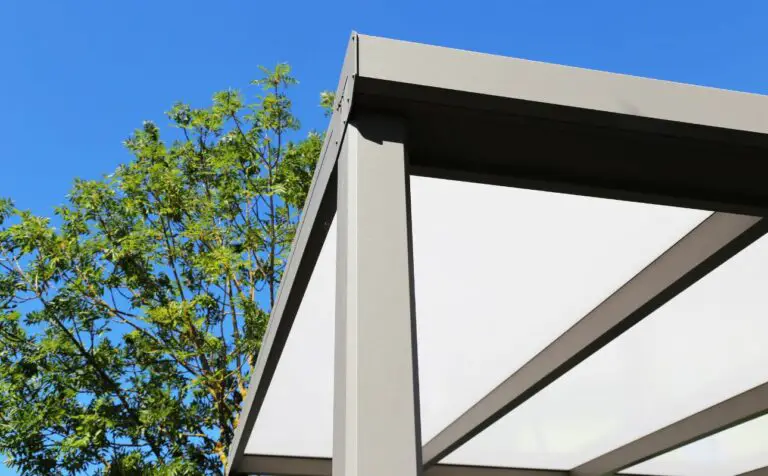What Is the Best Wood to Make Adirondack Chairs? (Explained)
Like choosing the right ingredients for a perfect recipe, selecting the best wood to make Adirondack chairs is crucial for their longevity and aesthetic appeal. You’re not just building a chair, you’re crafting a timeless piece of furniture.
The type of wood determines its durability, resistance to weather, and overall look. While many woods can be used, cedar, teak, and pine are popular choices. Your decision will be swayed by factors like the climate of your area, your budget, and your personal taste.
Let’s dive deeper into the world of woods and discover which one fits your Adirondack chair-making needs the best.
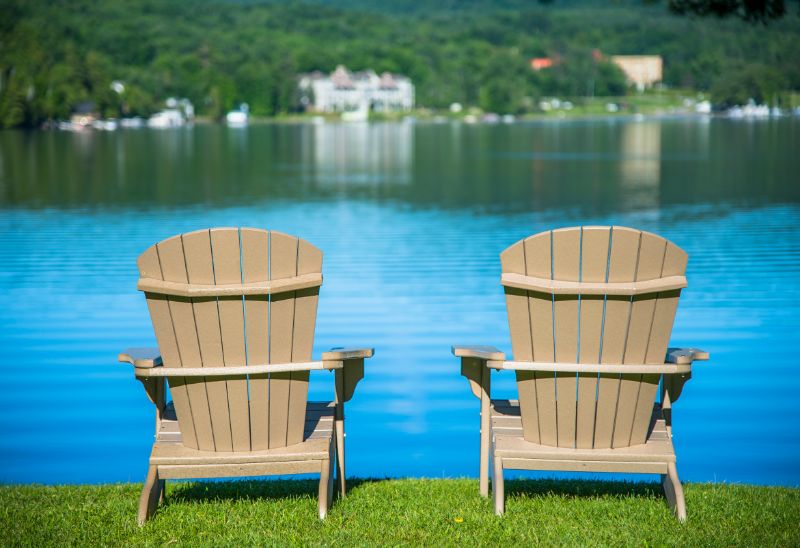
Types of Woods to Make Adirondack Chairs
Choosing the right wood for your Adirondack chairs determines their quality, durability, and aesthetics.
You’ve probably come across several types like cedar, teak, white oak, yellow pine, and mahogany, among others.
Let’s discuss each of these woods to help you decide which is the best fit for your chairs.
Cedar
In your quest for the perfect Adirondack chair, you’ll find that cedar, despite its few drawbacks, offers numerous benefits due to its natural oil, water-resistance, insect-repelling characteristics, and beautiful color.
When comparing cedar wood vs other woods, cedar’s durability and unique aesthetics often give it an edge. However, it’s worth noting that cedar wood maintenance can be slightly higher as it may need regular sealing or staining to prevent cracking or warping.
Consider the following about cedar wood:
- Durability: Cedar can last for years, even in harsh weather conditions.
- Price Range: Cedar Adirondack chairs typically fall within a moderate price range, making them affordable yet high-quality options.
- Aesthetics: The rich, red hue of cedar wood can add a touch of elegance to your outdoor space.
Teak
Now, let’s dive into the world of teak wood, another popular choice for crafting Adirondack chairs. The benefits of teak wood are plenty. It’s robust, durable, and weather-resistant, making it ideal for outdoor furniture. Plus, teak wood maintenance is minimal, saving you time in the long run.
However, there are some drawbacks. Teak wood is pricey and heavy, which could be a deal-breaker for some. Moreover, the environmental impact of teak wood harvesting is worth considering.
When it comes to teak Adirondack chair examples, you’ll find a variety of designs in the market. These chairs are typically priced higher due to the quality of the wood. Despite the teak chair prices, their durability and low maintenance may justify the cost for you.
White Oak
Moving on from teak, you’ll find white oak to be another excellent material for crafting Adirondack chairs. One of the key benefits of white oak is its impressive rot resistance, making it a durable choice for outdoor furniture. It also possesses a classic look that adds a touch of elegance to any patio.
However, there are some drawbacks to consider. White oak is susceptible to stains and scratches, and it can suffer UV damage if not properly protected. Regular finishing is required to maintain its appearance and durability.
Consider these examples to create a vivid image:
- A finely crafted white oak Adirondack chair, glowing with a honey-hued finish
- The same chair, but weathered and grey from neglect, showing the need for regular maintenance
- An elegant chair, showing white oak’s susceptibility to stains and scratches.
Yellow Pine
Switching your attention to yellow pine, you’ll find that it’s an affordable and readily available option for your Adirondack chair. Its benefits include easy workability and versatility in design options.
However, the drawbacks are its softness, and its susceptibility to moisture, insects, and decay. Yellow pine requires pressure-treatment and frequent painting to maintain longevity.
Furthermore, despite these maintenance tips, yellow pine may not last as long as harder woods. As for prices, a yellow pine Adirondack chair can range from $100 to $200, depending on the design. This makes it a budget-friendly choice for those who don’t mind the extra care it requires.
Mahogany
If you’re looking for richness and elegance in your Adirondack chair, mahogany is a superb choice to consider.
The benefits of mahogany wood in Adirondack chairs are numerous, including its durability and resistance to swelling, shrinking, and warping. Mahogany has a long history in furniture making due to its exceptional quality.
However, there are some drawbacks to using mahogany wood. These include:
- Its high cost due to scarcity
- Potential ethical issues related to sustainability
- Required maintenance to preserve its rich color and luster
Mahogany can be finished in various ways, from a natural, weathered look to a variety of beautiful stains. Despite its drawbacks, if you’re seeking a timeless, classic look for your outdoor space, mahogany Adirondack chairs might be your best bet.
Eucalyptus
While mahogany offers a classic elegance, you might find eucalyptus wood, a fast-growing and eco-friendly alternative, more appealing for your Adirondack chairs.
Renowned for its durability, eucalyptus can withstand the elements, although extreme weather may cause it to crack or warp. Its maintenance involves regular oiling to retain its luster and prevent damage.
The price range of eucalyptus Adirondack chairs is broad, catering to various budgets. As for the environmental impact, eucalyptus is a sustainable choice due to its rapid growth. Lastly, eucalyptus design options are plentiful, offering you the flexibility to choose a style that complements your outdoor decor.
Eucalyptus could be the ideal choice if you value longevity, affordability, and eco-friendliness in your Adirondack chairs.
Acacia
Often, you’ll find acacia wood to be an excellent choice for crafting durable and attractive Adirondack chairs. Among the acacia wood benefits, you’ll appreciate its durability, insect-repelling properties, and water resistance. Its diverse range of colors and grains offer a plethora of acacia Adirondack chair options to suit any outdoor décor.
- Acacia Wood Drawbacks: While acacia is robust, it’s sensitive to temperature and humidity changes, requiring proper sealing and regular cleaning.
- Acacia Wood Prices: These chairs can range from affordable to high-end, depending on the color, grain, and craftsmanship.
- Acacia Wood Maintenance Tips: Regular cleaning with a mild soapy solution, re-sealing every 2-3 years, and protecting from extreme weather can prolong its lifespan.
Choose acacia for a long-lasting, beautiful Adirondack chair.
Pressure-Treated Wood
Next on the list is pressure-treated wood, an accessible and affordable option you’ll come across in your search for the perfect Adirondack chair. This material’s pros include low cost, wide availability, and resistance to rot, insects, and fungi.
However, the cons of pressure-treated wood involve its chemical content and potential health risks. When choosing this wood, consider its maintenance needs and durability. Regular sealing helps prolong its lifespan.
Yet, there are health and environmental concerns with pressure-treated wood due to its chemical additives. If these issues bother you, alternatives to pressure-treated wood, like cedar or teak, might be worth considering.
Always weigh these factors when deciding on the best wood for your Adirondack chair.
How to Choose the Best Wood for Your Adirondack Chairs
Choosing the best wood for your Adirondack chairs depends on your personal style, comfort preferences, and budget constraints.
When considering the choosing factors, you need to weigh your budget considerations, conduct a durability comparison, understand the maintenance requirements, and research reputable brands before making a decision.
Here are a few aspects to keep in mind:
- Budget: High-quality woods like teak or cedar are slightly pricey but offer excellent durability. However, if you’re on a tight budget, pressure-treated wood or pine could be more affordable options.
- Durability: Some woods like teak, cedar, or redwood offer outstanding durability, resisting rot and insects. But remember, durability often comes with a higher price tag.
- Maintenance: Certain woods require more upkeep than others. For example, cedar needs regular staining or sealing to preserve its color and protect against weather damage.
When it comes to reputable brands, consider ones known for their quality materials and craftsmanship. Brands like POLYWOOD or Trex Outdoor Furniture offer a range of Adirondack chairs made from different wood types, providing an excellent blend of style, durability, and comfort. So, take time to make an informed decision that suits your needs and preferences.
How Thick Should Adirondack Chairs Be
When it comes to the construction of your Adirondack chairs, you shouldn’t underestimate the significance of the thickness of the wood used. The thickness plays a crucial role in the chair’s stability, comfort, and longevity.
Consider factors such as the chair’s purpose, your budget, and the environment it’ll be in when deciding on the wood thickness.
The ideal wood thickness for durability and comfort is typically 1.5 inches or more, but there are pros and cons of different wood thicknesses to consider.
| Wood Thickness | Pros | Cons |
|---|---|---|
| Thin (<1.5 inches) | Less expensive, lighter weight | Less sturdy, wears out quickly |
| Ideal (1.5 inches) | Durable, comfortable, stable | More costly, heavier |
| Thick (>1.5 inches) | Extremely durable, potentially more comfortable | Most expensive, very heavy |
Cost implications of different wood thicknesses can’t be overlooked. Thicker wood tends to be more expensive but offers greater stability and longevity. On the other hand, thinner wood might be cheaper, but it could compromise the chair’s stability and lifespan.
Ultimately, your choice should balance cost, comfort, durability, and stability to get the most out of your Adirondack chairs.
How Much Wood is Needed to Build an Adirondack Chair
To build a standard adult-sized Adirondack chair, you’ll need roughly 11 boards of lumber, each 8 feet long.
However, bear in mind that the size, style, and design of the chair can alter the amount of wood required. It’s crucial to know how to choose the right wood for Adirondack chairs.
Different wood options for Adirondack chairs include cedar, teak, pine, and oak, each with its own pros and cons. Cedar is resistant to rot but can be soft, whereas teak is durable but expensive. Pine is affordable but may require more maintenance, and oak is strong but not as weather-resistant as other options.
When selecting wood for Adirondack chairs, consider these factors:
- Durability: How well will the wood withstand outdoor conditions?
- Cost: What’s your budget for the chair?
- Maintenance: How much time are you willing to dedicate to upkeep?
How Do You Weatherproof Wood Adirondack Chairs
After you’ve chosen the best wood for your Adirondack chairs, it’s crucial to weatherproof them to enhance their durability and longevity. There are numerous weatherproofing techniques you can consider, each with its benefits.
Weatherproofing protects your chairs from moisture, UV rays, insects, and decay, significantly extending their lifespan.
You can choose between DIY weatherproofing and professional weatherproofing. DIY options include using paint, stain, varnish, or sealant. Each offers unique protection levels and aesthetics, so consider what best suits your needs and the chair’s design.
To do DIY weatherproofing, first clean and dry the furniture. Then, apply your chosen product with a brush, ensuring to cover every surface. Let the first coat dry before applying a second for better protection.
Professional weatherproofing, on the other hand, is a great option if you don’t have the time or resources to do it yourself. Professionals have the knowledge and tools to ensure thorough and uniform application.
Natural weatherproofing involves using wood types like teak or cedar, which have inherent resistance to weather elements. However, these woods can still benefit from additional weatherproofing to maximize their durability.
Whichever method you choose, remember that regular maintenance is key to keeping your Adirondack chairs looking great for years.
How Long Do Wooden Adirondack Chairs Last
On average, your wooden Adirondack chairs can last anywhere between 10 to 15 years, provided you’ve taken care of them properly and they’ve been weatherproofed correctly. However, the lifespan of your chairs can be affected by several factors.
The type of wood used, exposure to harsh weather conditions, frequency of use, and your maintenance routine all play a significant role.
Here’s a brief snapshot of the factors affecting the lifespan of wooden Adirondack chairs:
- The type of wood: Some woods are naturally more resistant to rot and pests.
- Weather conditions: Excessive moisture, heat, or cold can damage the wood.
- Maintenance routine: Regular cleaning, refinishing, and timely repairs can significantly extend the life of your chairs.
Common mistakes in maintaining wooden Adirondack chairs include neglecting regular cleaning, delaying refinishing, and improper storage.
For cleaning and refinishing wooden Adirondack chairs, you should use mild soapy water and a soft brush for cleaning, and a high-quality outdoor wood sealant for refinishing.
When it comes to repairing techniques for wooden Adirondack chairs, consider seeking professional help for severe damages. Finally, during the off-season, ensure proper storage of wooden Adirondack chairs in a dry, cool place to prevent damage.
Can You Leave Wooden Adirondack Chairs Outside?
Despite the durability of your wooden Adirondack chairs, you may wonder if it’s safe to leave them outside all year round. Let’s explore the pros and cons of this decision.
On the plus side, leaving the chairs outside provides convenience for spontaneous outdoor relaxation.
However, adverse weather conditions can cause warping, cracking, fading, and even rotting. That’s where maintenance tips come in handy. Regular cleaning, sanding, and applying a sealant can mitigate these effects, but this requires time and effort.
If you’re considering weather resistant options, poly lumber or other alternative materials can be a worthwhile investment. These materials emulate the classic look of wood but are more resilient against the elements.
Covering options offer another solution. When your Adirondack chairs aren’t in use, especially during harsh weather, cover them with a tarp or patio cover. This can protect the wood from moisture and UV damage.
Sources
- (1) What Wood to Use for Adirondack Chairs – Chair Choose
- (2) How Much Does It Cost to Make an Adirondack Chair?
- (3) How to Weatherproof Adirondack Chairs? [Best Finishes Explained]
- (4) Wooden Adirondack Chair: Make It Last a Long Time – Lawn and Pool Reviews
- (5) Adirondack Chair Dimensions and Guidelines (with Photos)
- (6) How much wood do you need to build an Adirondack chair?
- (7) How to Weatherproof Adirondack Chairs? (In 7 Easy Steps)
- (8) How much lumber does it take to build an Adirondack chair?
